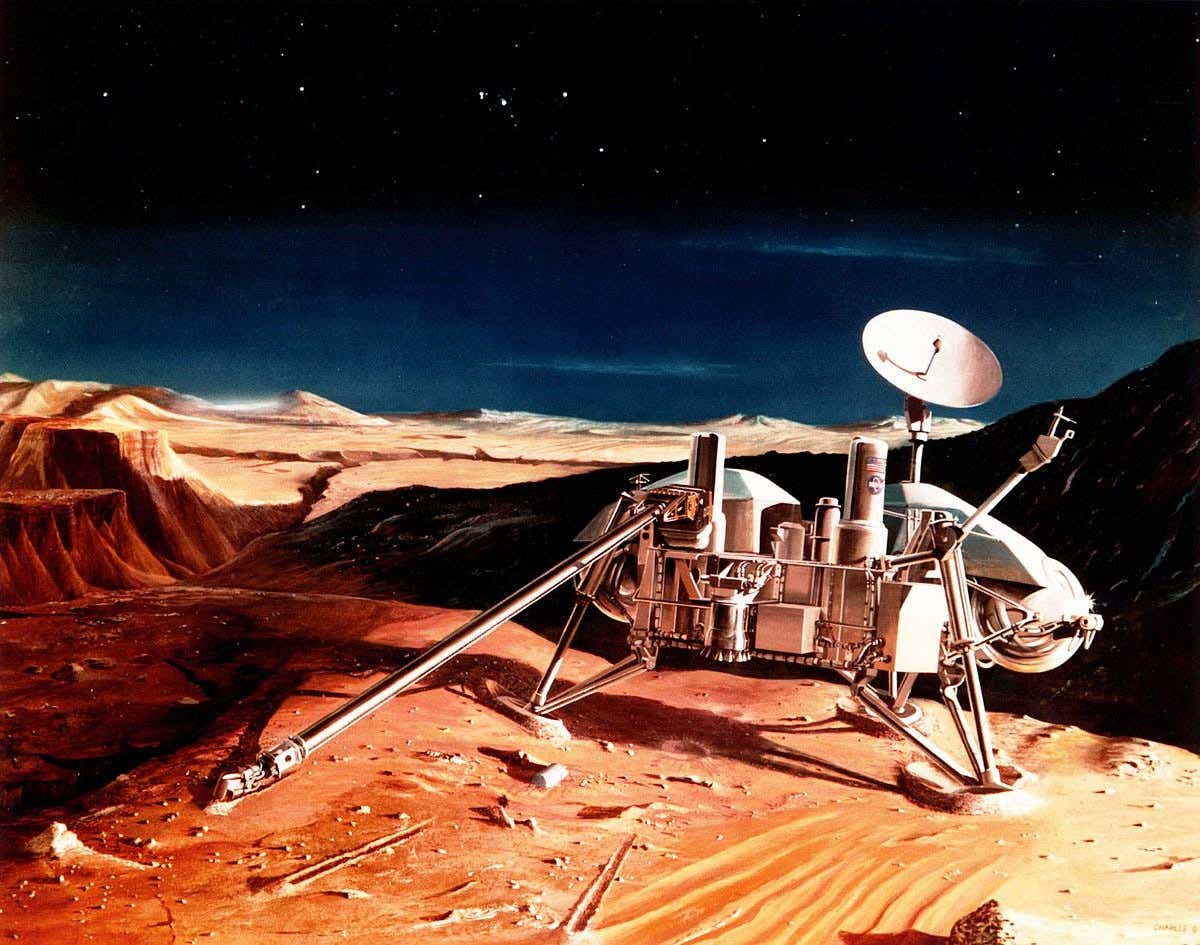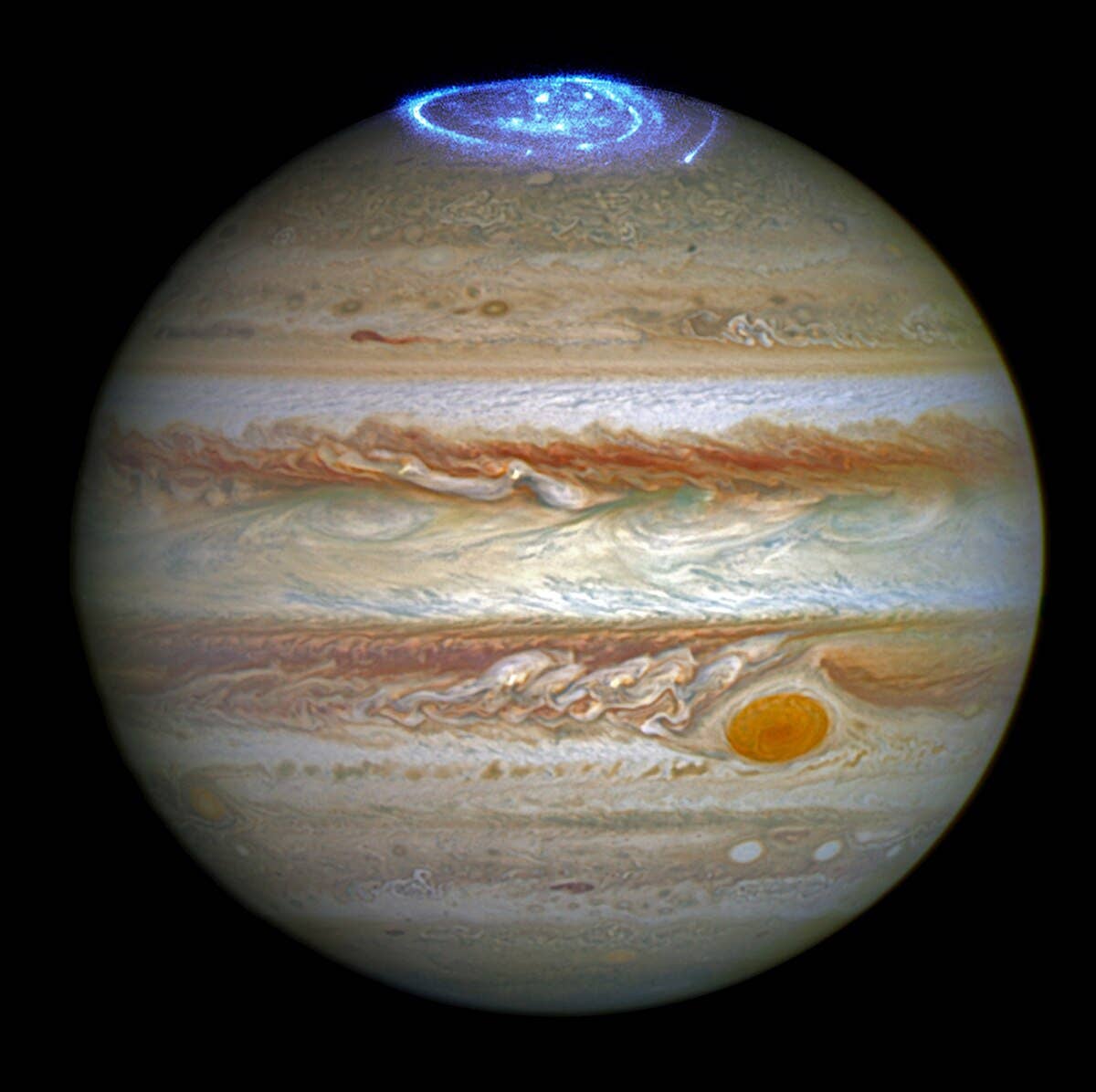Did NASA discover and then destroy life on Mars 50 years ago?
Almost half a century ago, NASA’s Viking landers could have stumbled upon Martian life, only to inadvertently extinguish it.

[Sept. 12, 2023: Staff Writer, The Brighter Side of News]
A watercolor painted by Charles Bennett, an employee of Martin Marietta (now Lockheed Martin). The scene depicted is an artistic representation of one of the two Viking landers at work on the surface of Mars.
In a startling revelation, Dirk Schulze-Makuch, an eminent astrobiologist from Technical University Berlin, recently asserted that almost half a century ago, NASA's Viking landers could have stumbled upon Martian life, only to inadvertently extinguish it. His controversial theory is dividing the scientific community.
"NASA may have unwittingly uncovered life on Mars nearly 50 years ago and accidentally destroyed it before understanding its significance," Schulze-Makuch posits.
The Viking Mission and Its Groundbreaking Experiments
In 1976, NASA's Viking landers touched down on the Red Planet with a mission that would forever change our understanding of our galactic neighbor. The landers, Viking 1 and Viking 2, executed four experiments:
The Gas Chromatograph Mass Spectrometer (GCMS) Experiment: Aimed to identify organic carbon-containing compounds in Martian soil.
The Labeled Release Experiment: Probed for metabolism by introducing radioactively traced nutrients to the Martian soil.
The Pyrolytic Release Experiment: Searched for carbon fixation, hinting at potential photosynthetic organisms.
The Gas Exchange Experiment: Monitored gas changes, specifically focusing on life-critical gases like oxygen, carbon dioxide, and nitrogen, in isolated soil samples.
While the results from the labeled release and pyrolytic release experiments indicated potential life-presence due to minor fluctuations in some gas concentrations, the findings remained confounding. The gas exchange experiment, considered the most crucial, however, returned a negative.
Dissecting the Viking Results
One puzzling aspect of the Viking's findings was the discovery of chlorinated organic compounds. Originally, these compounds were dismissed as potential contaminants from Earth. Yet, subsequent missions demonstrated that these organics are natural Martian components.
In 2007, another piece of this complex puzzle was unearthed when NASA's Phoenix lander found traces of perchlorate—a chemical used in various Earth applications—on Mars.
Related Stories
Chris McKay, a respected astrobiologist at NASA's Ames Research Center, opined that perchlorate's presence could explain the Viking results. He conveyed to Live Science, "The discovery essentially resolved the Viking dilemma."
However, Schulze-Makuch challenges this consensus, suggesting the Viking experiments might have skewed results due to excessive water use.
Water: A Double-Edged Sword
"On Earth, abundant with water, it seemed logical to use water in Martian studies, expecting life manifestations in its arid conditions," Schulze-Makuch commented, expressing regrets on the methodology. He drew parallels with Earth's Atacama Desert, where extreme microbes flourish within hygroscopic rocks. These rocks, also present on Mars, extract minimal moisture from the ambient atmosphere, sustaining such life-forms.
The first panoramic photo of Mars, taken by NASA's Viking 1 lander on July 20, 1976. (CREDIT: NASA/JPL)
If such Martian microbes also incorporated hydrogen peroxide, they could draw additional moisture and might produce gases similar to those identified in the labeled release experiment, Schulze-Makuch theorized.
However, there's a catch: excessive water is lethal to these organisms. A 2018 study in Scientific Reports highlighted that severe flooding in the Atacama Desert exterminated up to 85% of native microbes. Schulze-Makuch drew a poignant analogy: "Just as humans could drown in vast ocean expanses, adding too much water could have been fatal for potential Martian microbes."
Alberto Fairén, a distinguished astrobiologist from Cornell University and co-author of the 2018 research, echoed Schulze-Makuch's sentiments. In a communique to Live Science, Fairén mentioned he "completely concurs" with the idea that the Viking water addition might have exterminated potential life.
Diverse Views and The Path Forward
This isn't the maiden claim asserting that Viking experiments might have inadvertently annihilated Martian life. In 2018, a set of scientists hypothesized that heating the soil samples could have triggered an unforeseen chemical reaction, potentially incinerating the Martian microbes.
Profiles for thiophenes (A), thiols and sulfides (B and C), other volatiles (D), and O2 and CO2 (E) are shown. The identity of the volatile, the m/z, and the scaling factor are listed for each profile. (CREDIT: Science)
However, McKay offers a different perspective: "Their rationale is questionable. There's no necessity to speculate about a bizarre life form to justify the Viking outcomes."
While Schulze-Makuch's assertions breathe new life into a decades-old debate, the truth about Mars's potential life remains veiled in mystery. Only future missions and continued research will unveil the Red Planet's secrets. Until then, Schulze-Makuch's claim serves as a poignant reminder of the intricate dance between exploration and understanding.
For more science stories check out our New Discoveries section at The Brighter Side of News.
Note: Materials provided above by the The Brighter Side of News. Content may be edited for style and length.
Like these kind of feel good stories? Get the Brighter Side of News' newsletter.
Joseph Shavit
Head Science News Writer | Communicating Innovation & Discovery
Based in Los Angeles, Joseph Shavit is an accomplished science journalist, head science news writer and co-founder at The Brighter Side of News, where he translates cutting-edge discoveries into compelling stories for a broad audience. With a strong background spanning science, business, product management, media leadership, and entrepreneurship, Joseph brings a unique perspective to science communication. His expertise allows him to uncover the intersection of technological advancements and market potential, shedding light on how groundbreaking research evolves into transformative products and industries.



